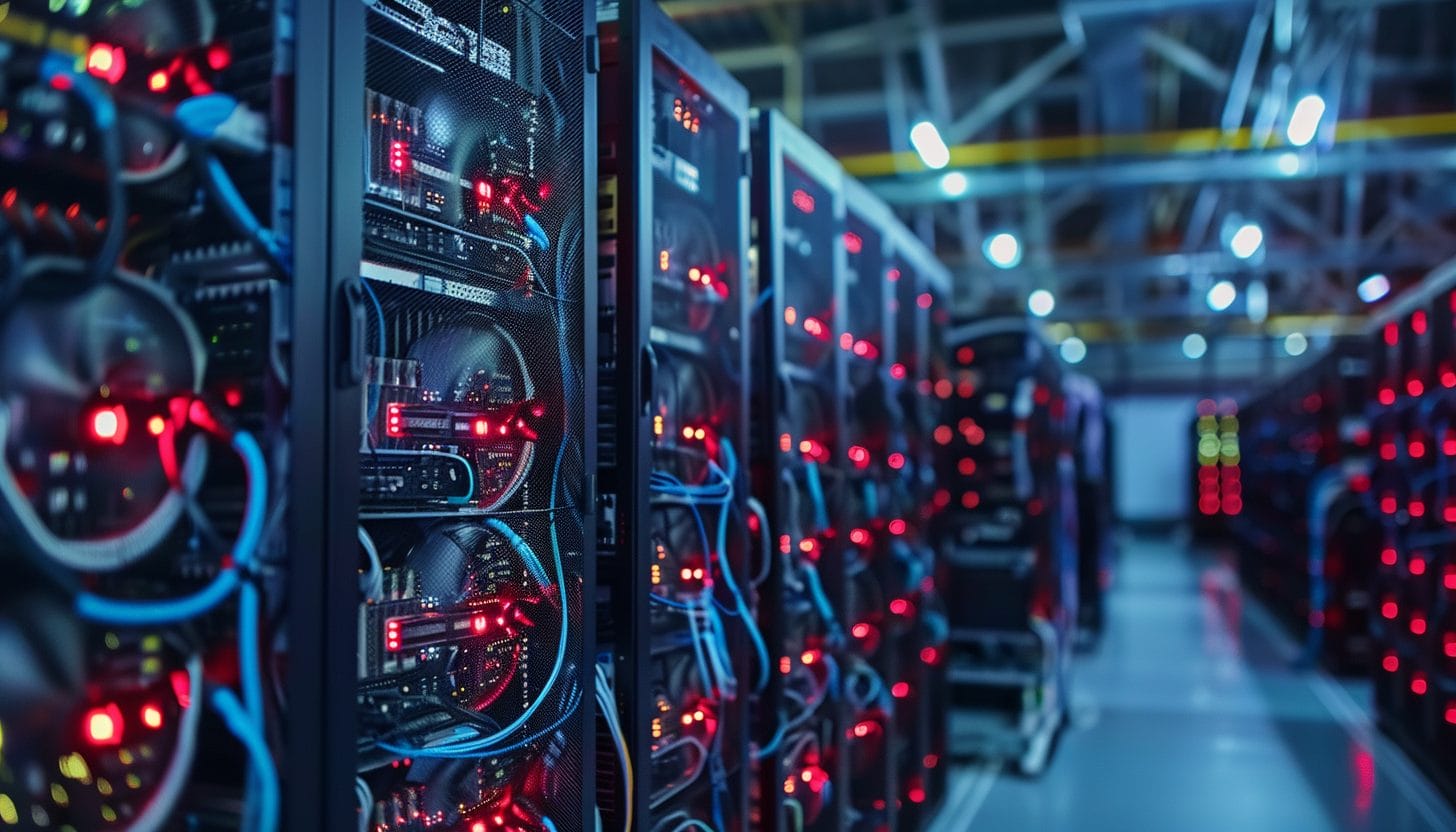Bitcoin Miners Expand Operations To AI Data Centers, Despite High Infrastructure Costs

A handful of Bitcoin miners are diversifying operations to support artificial intelligence (AI) data centers amid struggles to stay profitable.
Data from Bitinfocharts show that the average BTC transaction fee on April 19, the day of the Bitcoin halving, surged to $127. Yet this has since plummeted to around $4 at the time of writing.
As a result, both Bitcoin fees and miner revenue have declined. For example, Bitcoin mining farm Bitfarms saw a 42% revenue loss in May. According to a company production and operations report, Bitfarms held 263 Bitcoin (BTC) ($18.1 million) in April but only 156 Bitcoin ($10.7 million) in May. Bitfarm described this as the “first full month with post-halving economics.”
In addition, miners sold at least 1,200 BTC on June 10, marking this as the highest daily total in two months. Julio Moreno, Head of Research at CryptoQuant, posted on X about this, noting that the crypto market is seeing signs of Bitcoin miner capitulation.
Sings of #Bitcoin miner capitulation:
yesterday we saw the largest daily miner selling volume since late March: 1,200 Bitcoin.Some big mining companies have been selling a portion of their reserves.
These are Bitcoin being sold OTC, not in exchanges. pic.twitter.com/KhkHmmTDBo
— Julio Moreno (@jjcmoreno) June 11, 2024
Miners Expand Operations To Support AI Data Centers
Some Bitcoin miners have signed deals with AI businesses to provide infrastructure requirements in order to increase revenue and remain profitable.
Asher Genoot, CEO of mining firm Hut 8 Corp., told Cryptonews that Hut 8 recently launched its AI vertical under a GPU-as-a-service model. Genoot shared that Hut 8 Corp. purchased its first cluster of 1,000 NVIDIA H100 GPUs last October.
“We recently secured a customer agreement with a venture-backed AI cloud platform,” Genoot said. “We expect this cluster to begin generating revenue in the second half of this year at a forecasted annual rate of approximately $20 million.”
Ross Gan, Chief Communications Officer at Bitdeer Technologies Group, told Cryptonews that Bitdeer has also incorporated high-performance computing into its core offerings.
“In Q4 last year, we partnered with NVIDIA and completed the deployment of the full NVIDIA DGX SuperPOD with H100 Systems in less than four months,” Gan said. “This features 31 NVIDIA DGX servers with a total of 248 H100 GPUs.”
Excited to launch our new #AITraining platform, empowering scalable model development with project-based resources, pre-configured guides, and customizable parameters!
Explore now! 👉https://t.co/EnoNJkA4iq https://t.co/3MyLVPbBuQ— Bitdeer (@BitdeerOfficial) June 13, 2024
According to Gan, Bitdeer’s SuperPods enable the mining firm to efficiently process massive data sets, execute complex computations, and enhance data center sustainability by reducing redundancies.
“As of June 6, 2024, we have signed multiple client contracts, rented out 80 H100 units, and achieved a revenue of approximately $0.5 million,” Gan added.
Former Bankrupt Bitcoin Miner Locks in AI Data Center Deal
Bitcoin miner Core Scientific recently announced a 12-year deal with cloud provider CoreWeave to provide infrastructure for AI use cases.
According to the official press release, Core Scientific will deliver approximately 200 megawatts (MW) of infrastructure to host CoreWeave’s high-performance computing (HPC) operations. It’s further noted that Core Scientific will modify multiple existing, owned sites to host CoreWeave’s NVIDIA GPUs.
Tonight, we announced that Core Scientific will be providing an additional ~200 MW of infrastructure to host @CoreWeave #HPC services.
– ~200 MW of infrastructure for HPC compute
– Estimated to generate total cumulative revenue for Core Scientific of over $3.5 billion during the… pic.twitter.com/GWRaJuJdZs— Core Scientific (@Core_Scientific) June 4, 2024
Core Scientific emerged from bankruptcy in January of this year. The press release states that the project is estimated to generate total cumulative revenue for Core Scientific of over $3.5 billion during the initial 12-year terms of the contracts.
The estimated average annual revenue from the contracts is expected to be approximately $290 million. Overall, this is expected to enhance Core Scientific’s earnings power and drive shareholder value.
AI Operations May Bring Profits, But Not For All
Although some Bitcoin miners are betting big on AI data centers, Genoot pointed out that not all mining sites are suitable for this conversion.
“Many Bitcoin miners are talking about pivoting their business models to support AI, though we do not expect all of them to be successful in doing so,” he said.
Genoot explained that this is because the infrastructure and capital requirements are materially higher for AI workloads than for mining.
“We believe Hut 8 is uniquely positioned to succeed in this effort due to our track record in building and operating complex energy infrastructure (1.2 GW under management as of the end of April),” Genoot said.
He added that Hut 8 had previous expertise in the data center space due to an existing high-performance computing (HPC) business.
“We established that in January 2022 via the acquisition of five data centers (~36,000 sq ft) in Canada,” Genoot remarked.
AI Data Centers Require Steep Investments
Indeed, accommodating AI data centers will not immediately appeal to all Bitcoin miners.
Jamie McAvity, CEO at Cormint Data Systems — a Bitcoin mining company based in Ft. Stockton, Texas — told Cryptonews that AI data centers are completely different from crypto mining facilities.
“It’s a completely separate type of data center, application, and hardware,” McAvity said. “The areas in which AI and mining overlap are primarily in the use of high voltage interconnections. But everything from the medium voltage electrical work to the data centers and the computing equipment within them are different.”
McAvity further mentioned that while AI will offer miners a different revenue stream that could help them become more profitable, greater upfront investments would likely be required.
To put this in perspective, Genoot explained that AI data centers require a constant, reliable flow of electricity to ensure smooth and consistent operations.
“Networking requires miles of fiber and complex engineering to optimize the performance of GPUs,” Genoot said. “There are also superior cooling requirements given the increased rack density (40 kW/rack for H100s) versus mining and other forms of compute.”
With this in mind, McAvity shared that Cormint has no implementation plans for AI infrastructure at their mining facilities. McAvity mentioned that Cormint’s uptime has been a bit lower due to shutting down the mine more often in response to higher power prices.
“Mining breakevens expressed in $/KWh have gone down by 50% following the halving, so power prices are now higher than mining revenue more often,” he said. “We believe many other miners are behaving similarly as mining difficulty has not made a new all time high for 7 weeks.”









